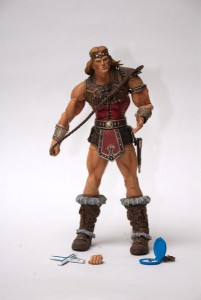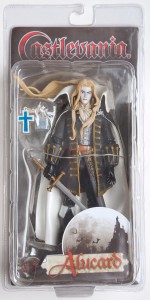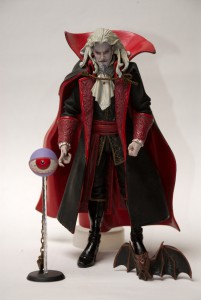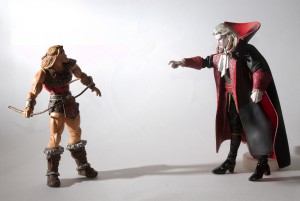 Last week, I had a toy shoot for some Castlevania toys that were going up for sale. The shoot was pretty straightforward, and all I needed was one off-camera strobe and a shoot-through umbrella. I initially planned to use my DIY macro studio, but it was too small for these action figures, and the ration of the diffusion sides to the size of the action figures wasn’t that favorable as well. If you want to make your own macro studio, there’s a tutorial over at the Strobist website. It’s easy to build and is a quick and effective way of getting great lighting in a jiffy.
Last week, I had a toy shoot for some Castlevania toys that were going up for sale. The shoot was pretty straightforward, and all I needed was one off-camera strobe and a shoot-through umbrella. I initially planned to use my DIY macro studio, but it was too small for these action figures, and the ration of the diffusion sides to the size of the action figures wasn’t that favorable as well. If you want to make your own macro studio, there’s a tutorial over at the Strobist website. It’s easy to build and is a quick and effective way of getting great lighting in a jiffy.
 For the shot of Alucard in his box, you could prop the box upright, set up a seamless background and shoot it and just eliminate the shadows on the seamless in post. Or you could do what I did and get a big sheet of paper and lay it on the floor, and then place the box flat on it. That way, when you light it with a big diffused light source, there are less shadows to eliminate and the light is spread out more evenly. It helps if you have a tripod that has an invertible head (sorry, cheap tripods won’t cut it here).
For the shot of Alucard in his box, you could prop the box upright, set up a seamless background and shoot it and just eliminate the shadows on the seamless in post. Or you could do what I did and get a big sheet of paper and lay it on the floor, and then place the box flat on it. That way, when you light it with a big diffused light source, there are less shadows to eliminate and the light is spread out more evenly. It helps if you have a tripod that has an invertible head (sorry, cheap tripods won’t cut it here).
Of course, if you have the cash to spare, then the way to make a dropout with small objects is to get a white acrylic and mold it like a seamless and light it all from below, and then set up your key light.
 The shots of Dracula and Simon Belmont (above) are also fairly straightforward portraits. Used a large sheet of paper as my seamless and lit with one large shoot through umbrella camera left as my key. Since we’re using a fairly large umbrella for a small object, and we can also get the umbrella in close to our subject, the ratios really help to create really smooth, diffused light.
The shots of Dracula and Simon Belmont (above) are also fairly straightforward portraits. Used a large sheet of paper as my seamless and lit with one large shoot through umbrella camera left as my key. Since we’re using a fairly large umbrella for a small object, and we can also get the umbrella in close to our subject, the ratios really help to create really smooth, diffused light.
In the last shot, I opted to shoot with a bare flash to create more drama, contrast and shadows. The flash was positioned directly behind Simon Belmont and pointed towards him and Dracula so it would create lots of shadows. However, this left the unlit side of the figures too dark, and the point of this shoot was to provide details to potential buyers. So I used the built-in flash of my camera as an on-axis fill, dialed down to around -0.7 EV, which shows just the right amount of detail.
Total shoot time, around 15 minutes. Quick and easy.






